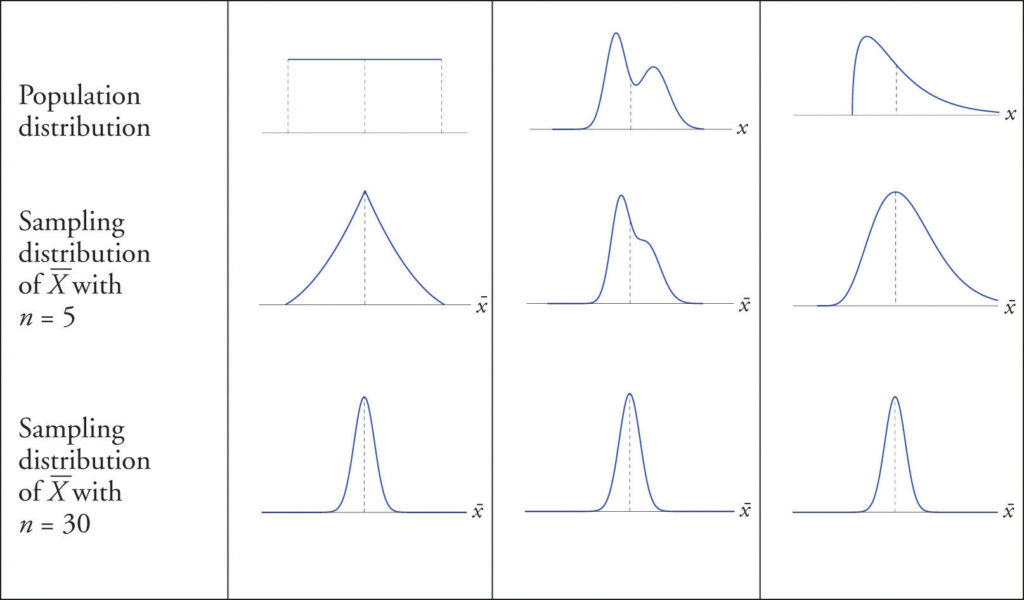Hi everyone! Read through the material below, watch the videos, have fun with your labs and follow up with your instructor if you have questions.

Topic: Sample Mean and Distribution of Sample Means
We frequently want to know a parameter for a population, such as the mean of a variable, but collecting data for each member of the population is often impractical. However, to get a good estimate of this value, it suffices to study just a sample. The Central Limit Theorem (CLT) is the theoretical tool that allows us to provide an estimate of the population parameter using the sample statistic. The estimate will always include “wiggle room” that depends on the size and variability of the sample.
For instance, in the media, you may hear something like “Mayor Garcia has the support of 55% of her adult constituency plus or minus 2%”. What is meant is that a poll was taken using a sample and that, with high likelihood, her actual support is in the interval from 53% to 57% .
- Openstax Introductory Statistics:
- Introductory Statistics by Sheldon Ross, 3rd edition: Section 7.3 & 7.4.1
WeBWorK. Set 7.1


